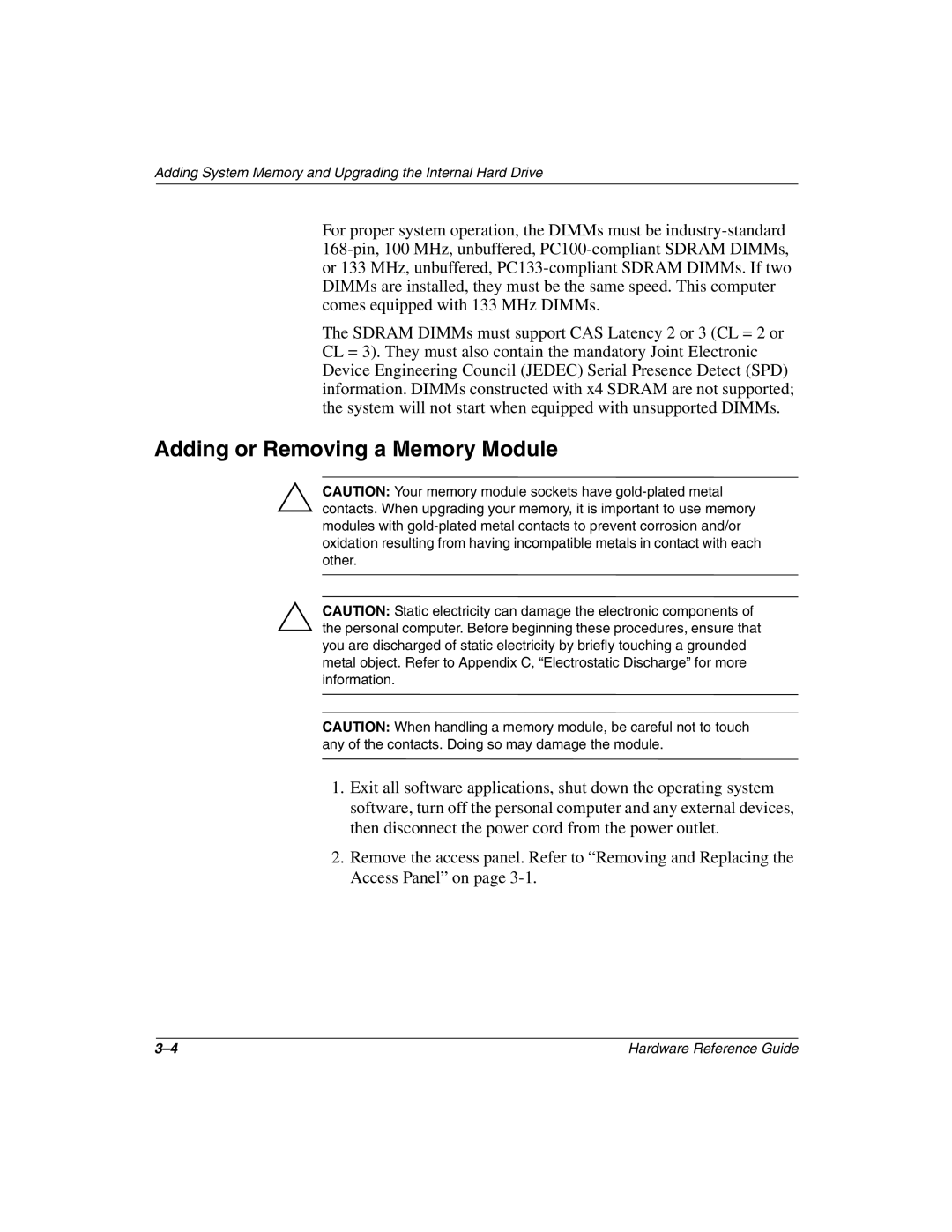
Adding System Memory and Upgrading the Internal Hard Drive
For proper system operation, the DIMMs must be
The SDRAM DIMMs must support CAS Latency 2 or 3 (CL = 2 or CL = 3). They must also contain the mandatory Joint Electronic Device Engineering Council (JEDEC) Serial Presence Detect (SPD) information. DIMMs constructed with x4 SDRAM are not supported; the system will not start when equipped with unsupported DIMMs.
Adding or Removing a Memory Module
ÄCAUTION: Your memory module sockets have
ÄCAUTION: Static electricity can damage the electronic components of the personal computer. Before beginning these procedures, ensure that you are discharged of static electricity by briefly touching a grounded metal object. Refer to Appendix C, “Electrostatic Discharge” for more information.
CAUTION: When handling a memory module, be careful not to touch any of the contacts. Doing so may damage the module.
1.Exit all software applications, shut down the operating system software, turn off the personal computer and any external devices, then disconnect the power cord from the power outlet.
2.Remove the access panel. Refer to “Removing and Replacing the Access Panel” on page
Hardware Reference Guide |
